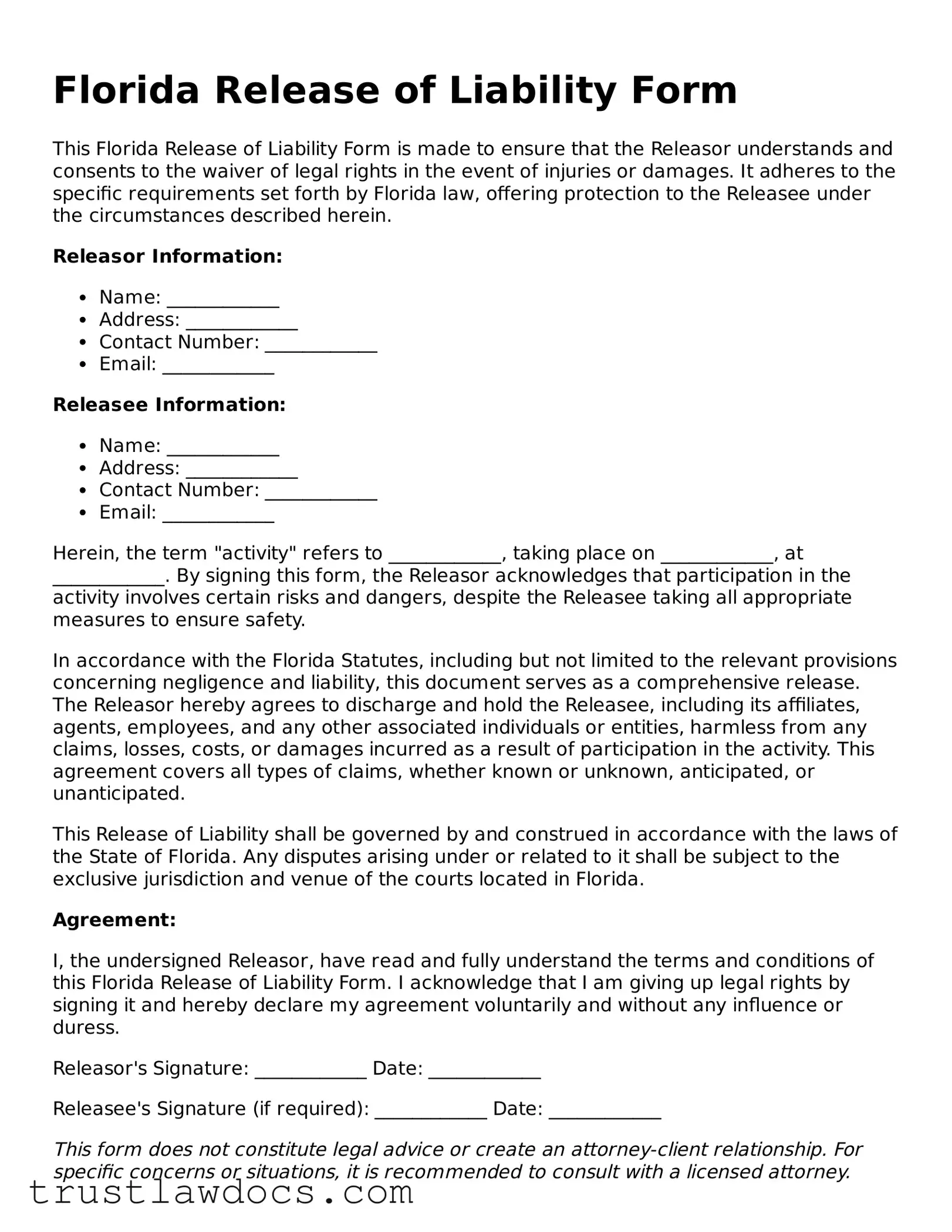What is a Florida Release of Liability form?
A Florida Release of Liability form is a legal document that releases one party from legal responsibility for any accidents, injuries, or losses that might occur during an event, activity, or transaction. This form is commonly used in activities that involve a certain level of risk, such as sports events, recreational activities, or when selling a vehicle. It protects the party requesting the release (the releasor) from future legal claims brought by the signing party (the releasee).
When should you use a Florida Release of Liability form?
Use a Florida Release of Liability form when engaging in any transaction or activity in Florida that involves potential risks of injury, damage, or loss. Common scenarios include selling a vehicle, organizing a sporting event, or offering a service that includes physical activities. It ensures that participants or involved parties are aware of the risks and agree not to hold the organizer or service provider legally accountable for any related incidents.
Is a Florida Release of Liability legally binding?
Yes, a Florida Release of Liability form is legally binding if it is completed correctly and signed by the involved parties. For the form to be enforceable, it must clearly outline the risks involved in the activity or transaction, and the signing party must voluntarily agree to waive their right to sue. It is crucial that the form does not contain any fraudulent claims or intentions to deceive.
What information is needed to complete a Florida Release of Liability form?
To complete a Florida Release of Liability form, you need the names and addresses of both the releasor and the releasee, a detailed description of the activity or transaction, the specific risks associated with it, and the date of the agreement. Additionally, it should include a statement where the releasee acknowledges understanding these risks and agrees to release the releasor from future claims.
Can a minor sign a Florida Release of Liability form?
In Florida, a minor cannot legally sign a Release of Liability form due to age restrictions on contract enforceability. Instead, a parent or legal guardian must sign the form on behalf of the minor. This ensures that the minor is still protected under the form, given that the adult understands and accepts the risks involved.
How long is a Florida Release of Liability form effective?
The effectiveness of a Florida Release of Liability form can vary depending on the terms outlined in the document. Some releases are only effective for a specific event or duration, while others may cover a broader period or range of activities. It’s important to read the terms carefully to understand the scope and duration of the release.
Can you revoke a Florida Release of Liability after signing it?
Revoking a Florida Release of Liability after it has been signed is generally not possible unless there are provisions within the form that allow for revocation under certain conditions, or if both parties agree to nullify the document. In cases where the form was signed under duress, fraud, or misrepresentation, legal action might be taken to invalidate the agreement.
Do you need a witness or notarization for a Florida Release of Liability form to be valid?
While a Florida Release of Liability form does not specifically require notarization or a witness to be legally valid, having a form notarized or witnessed can add a layer of authenticity and may help in the enforcement of the document. It provides evidence that the parties indeed signed the document willingly and understood its content.
Where can you find a template for a Florida Release of Liability form?
Templates for a Florida Release of Liability form can be found online through legal websites, at attorney offices specializing in Florida law, or through state-specific resources that offer legal document templates. Ensure that the template is recent and complies with Florida law to make sure it’s enforceable.
